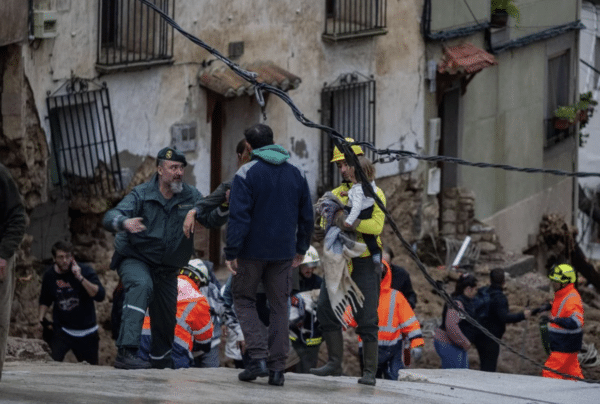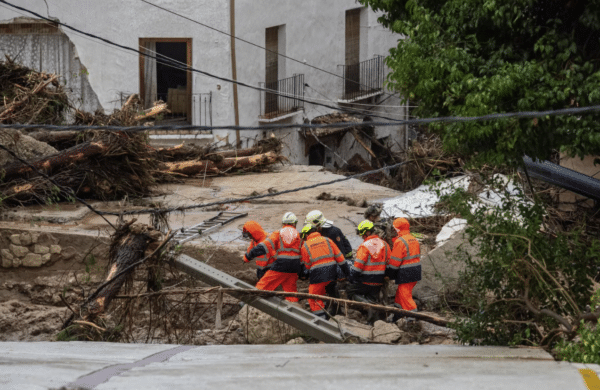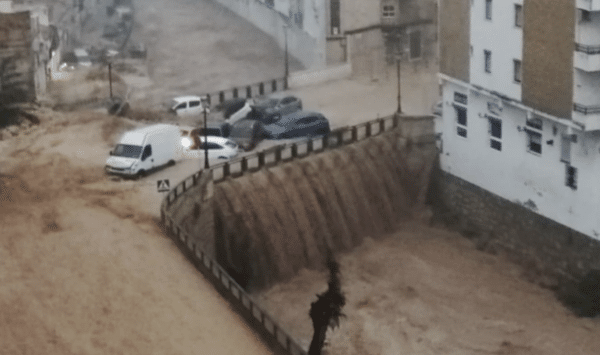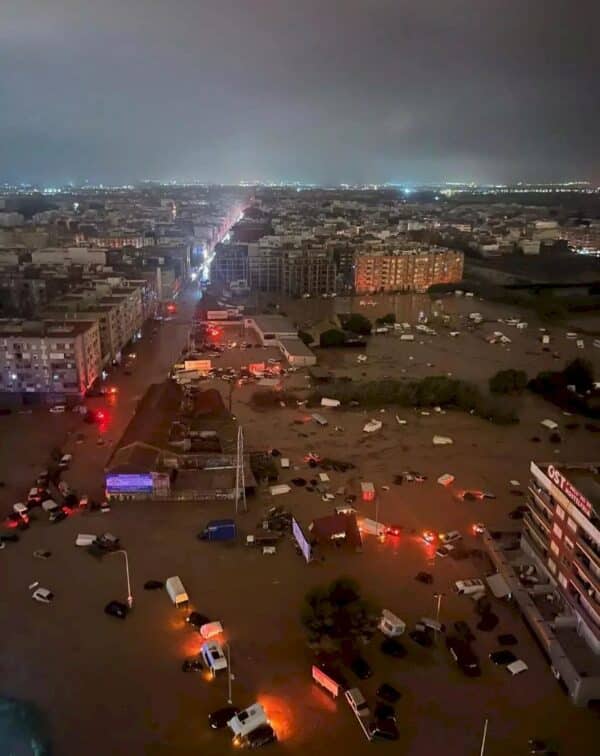At least 51 people have died from the floods caused by a “catrastrophic” DANA in the province of Valencia on Tuesday, according to the provisional reports from the Integrated Operational Coordination Centre of the Ministry of the Interior.
Early in the morning, the president of the Generalitat Valenciana, Carlos Mazón, spoke of “multiple victims”, but without confirming the exact number “out of respect for the families”.
A tragic figure of loss of human life as a consequence of the major flooding caused by the destructive DANA that hit a large part of the eastern half of Spain on Tuesday with the most affected areas in the province of Valencia.
ADIF, the public company that manages the railway infrastructure, suspended all train travel in the community early in the evening, Albacete, Malaga, Granada and Almeria, as well as the Region of Murcia.
The forecasts of the meteorologists were fulfilled and the worst storm of recent years, which began on Monday night, gained strength throughout the day to end up hitting the Mediterranean coast of the province.
See also: 13 feared Dead in Valencia storms after night of carnage.
“There are mny lifeless bodies and, unfortunately, they continue to appear,” the head of the regional government acknowledged to the media, adding that he could not give more details “out of respect for the families” so that they “can be adequately informed.” In any case, he wanted to send a “message of calm, patience and strength” to the population, “because where they have not been able to reach many areas still is because communications are absolutely impossible.” The emergency services are “prepared and ready” to act – he added – and, if they are not able to reach some places, it is because “either there is a collapse in communications, or because the areas are still flooded.”
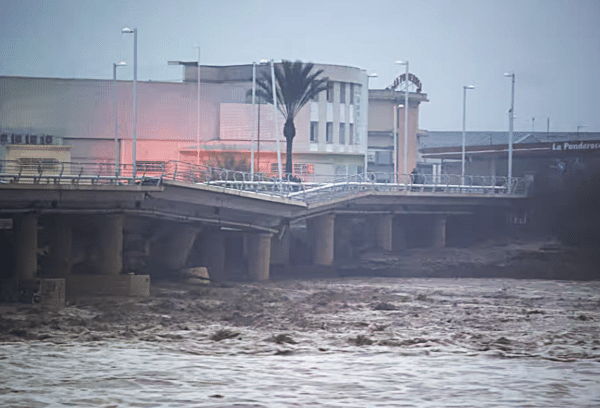
The Valencian Community was hit hard by the downpours, especially in the regions of Ribera Alta and Plana de Utiel-Requena. In the latter town, the volume exceeded 309 litres, in neighbouring Turís it reached 299 and in Castelló de la Ribera it reached 266, according to data from the Valencian Meteorological Association (Avamet).
Police were also searching in the town of l’Alcudia for the driver of a lorry who had disappeared due to the flood shortly before 13:00. The man did not answer calls to his mobile phone or contact anyone. His lorry, however, was found parked on a street.
In the province of Valencia, firefighters worked tirelessly and, among other tasks, carried out several rescues of motorists trapped in their vehicles. In one of the rescues, the helicopter of the Provincial Firefighters Consortium evacuuated several motorists from their cars.
Classes were suspended on Tuesday in various municipalities in Valencia and Alicante, as well as on the campuses of the University of Valencia, the Catholic University, the Polytechnic University and the CEU Cardenal Herrera Oria. A closure of schools that will be repeated on Wednesday in cities such as Valencia, Torrent, Alzira, Chiva, Cullera and Algemesí.
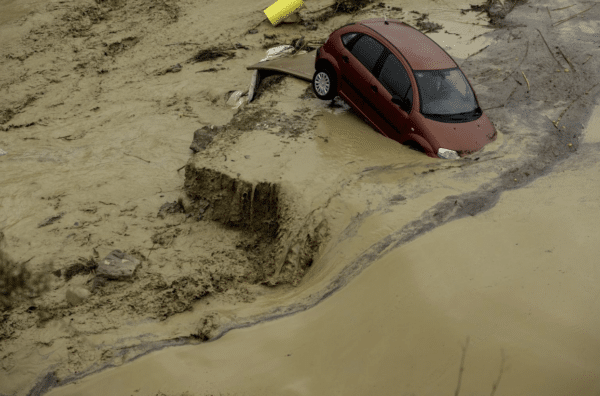
In addition to the closures of the A-3 and A-7 motorways – which link the Levante area with Madrid and Catalonia, respectively – in the afternoon there was the suspension of rail traffic on the Madrid-Valencia AVE line, where according to Renfe there were 2,722 passengers affected by the train suspensions.
Added to this were the major problems on several Cercanías lines, as well as on the metro in the capital of Turia. Finally, ADIF decided in the evening to suspend train travel in the Valencian Community until at least ten o’clock on Wednesday morning, when the weather conditions and the state of the tracks will be reassessed again to determine whether traffic can be resumed without safety problems.
Almost all activity in the ports of the city and in Sagunto was paralysed due to the maritime storm. The strong storm also caused multiple failures in the telephone lines, which forced Telefónica technicians to make an extra effort to try to repair the network. In addition, there were local road closures in several municipalities including Chiva, Buñol, Siete Aguas, Simat de la Valldigna, Requena, Alzira or Carcaixent, where the 100 litres per square metre were exceeded. There was also considerable damage caused by a tornado in Benifaió.
The EMU, activates over 1000 soldiers
The Ministry of Defense reports that a total of 1,034 soldiers, members of the Military Emergency Unit (UME), the Third Intervention Battalion, based in the Jaime I barracks in Valencia, were activated in the middle of the afternoon on Tuesday to move to the Utiel-Requena region, where there were numerous people isolated and roads and paths flooded
According to an announcement from the corps just after midnight, its members were “carrying out rescue and evacuation work for people trapped by the floods in Requena, Utiel, Chirivella and Alacuás.”
At Manises airport, meanwhile, ten flights (eight departures and two arrivals) had been cancelled by 8:00 p.m. and another twelve had been diverted (six to Alicante, five to Barcelona and one to Ibiza) as a result of the storms.
The president of the autonomous community, Carlos Mazón, urged the population not to go out on the road, especially in the province of Valencia, and to stay at home. In the case of those people who are outside, he advised them to seek high ground if they are near ravines and riverbeds. “The night is going to be long,” he said.
In the province of Cuenca, due to the storm, 725 passengers remained at the station in the provincial capital, waiting for normal rail traffic to be restored. Renfe announced that, in addition to providing food and drink to passengers, it will establish an alternative plan to continue their journey.
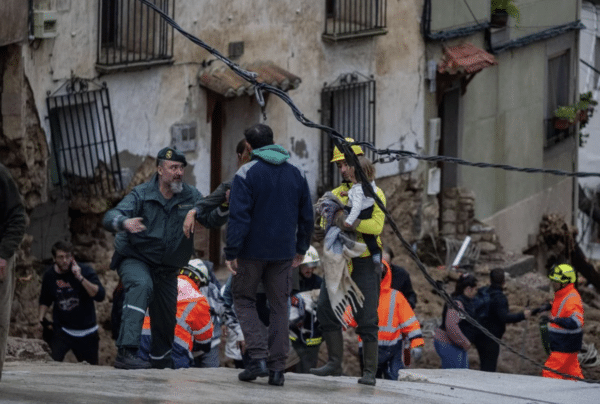
Missing in the mountains
The Provincial Fire Service of the Provincial Council of Albacete (SEPEI), assisted by a helicopter from the Civil Guard, began the search in the early hours of the afternoon for two missing people in the town of Letur (Albacete), in the heart of the Segura mountain range. These are two employees of this Town Hall who were last seen on board a van, a vehicle that later appeared abandoned in a gully.
For several hours they were regularly called by phone without success since the telephone communications in the town did not work throughout Tuesday. Another four people who had gone out to the mountains from the town were also being searched for at nightfall.
In addition, the Red Cross set up a temporary shelter at the Nuestra Señora de la Asunción public school in Letur, as the heavy rains affected many homes and left them uninhabitable. 60 people affected by the floods were taken there. Another 30 people were trapped in their homes and dozens had to take refuge in the town’s bars.
Another town in the province of Albacete affected by this storm was Molinicos, where rainfall reached 120 litres per square metre. One of its access roads was cut off by a landslide.
Floods and hail
The storms that fell during the early hours of Tuesday caused significant damage in Andalusia, closing numerous roads and suspending classes in several schools in the province. In Alora (Málaga) a high-speed train travelling from the capital of the Costa del Sol to Madrid derailed, without causing any injuries.
One of the axles of the front engine derailed as a result of a stream overflowing. The passengers were transferred to another train to continue their journey. Likewise, Adif workers managed to restore service on conventional gauge tracks near Málaga, but train traffic between Gobantes and El Chorro continued to be cut off in the early afternoon.
One of the towns in Malaga that was hardest hit by the storm was Alora, where the floods inundated large areas. Rain gauges recorded around 150 litres per square metre. Several people had to be evacuated by helicopter by the Guardia Civil in the El Puente neighbourhood of Isla Hermosa after the Guadalhorce River overflowed, reaching a water level of 4.2 metres.
In Marbella, a lightning strike caused a fire in a two-storey house. In the Axarquía region, around 100 litres per square metre were recorded during the night.
In neighbouring Almería, the worst part of the storm was borne by the residents of El Ejido. The heavy hailstorms destroyed roofs, cars, street furniture and, above all, crops. According to the Union of Small Farmers (UPA), the storms and hail would have caused damage to crops and facilities in the western Almería region worth around 30 million euros and affected some 11,300 hectares.
In Granada, heavy rains also caused flooding in Baza, Guadix and the Eastern Mountains. In Cúllar, the Civil Guard had to rescue a couple who were travelling in a car with their children – aged 1, 3 and 5 – when they were caught in the floodwaters on a dirt road in the Rambla del Lagarto. Likewise, agents of the armed institute rescued the occupants of a vehicle with a trailer in the district of Tarifa.
The storms also flooded large areas of the Murcia region, with road closures in the towns of Cehegin and Caravaca, where up to 121 litres per square metre were collected. The wind in Lorca reached gusts of around 50 kilometres per hour. This wind and the state of the sea caused a sailboat to sink in the port of Águilas.
